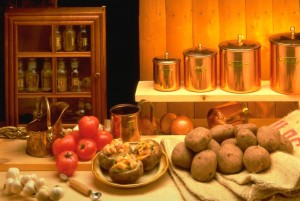
It’s satisfying to spread your table with your garden produce when you’re an avid homesteader and gardener. Your organically grown vegetables aid in enhancing your health and provide you with excellent nourishment. The following ideas can improve your homesteading and gardening:
1. Cultivate Potatoes in Barrels
Potatoes can be grown in plastic 50 gallon barrels, which are difficult for rodents to chew. Stack the barrels on a raised platform, then drill a few holes at the base for drainage purposes. Take a few potatoes, which have begun to sprout, and slice them into squares. Dry them out to prevent wet rot, then plant them in the barrels with some soil and compost. As the plant reaches the top of the barrel, plant horseradish or bush beans as a companion plant to ward off pests. When the potatoes are ripe for harvest, kick over the barrel and collect your crop.
2. Plant Herbs and Flowers with Your Garden Produce
You can attract pollinators to your vegetable garden by inter-planting your crop with a variety of herbs and flower species. Flowers in rich hues of blue and yellow lure bees, which encourage pollination. You’ll be assured of good crops in your harvest of tomatoes, eggplant and peppers. Herbs such as dill, fennel and parsley entice beneficial insects like ladybird beetles. These feed on the pollen and nectar of flowers and lay their eggs on the crops. The larvae will gorge on pests that threaten your vegetables.
3. Mulch Your Garden
You can prevent weeds from insidiously destroying your vegetables, and retain ground moisture, by mulching. Additionally, mulching permits you to moderate the temperature of the soil. It’s best to resort to material that decomposes, thereby adding organic matter to the soil. Your mulch material can range from shredded leaves to newspaper and cardboard:
- Shredded leaves. This nutrient-rich mulch is ideal for vegetables, flowerbeds and fruits. Shred the leaves with a lawn mower before covering the ground.
- Newspapers and cardboard. Smother the weeds around the pathways and plants with several layers of newsprint and cardboard. Blanket the material with shredded leaves or bark in a thick covering. Replace the paper as your garden grows.
- Tree bark. The most common form of mulching, you can obtain them by the bag from gardening stores. Take care that you purchase real bark. Then spread the pieces over the soil in your garden.
Adopt these recommendations for better homesteading and gardening, and observe your crops burgeon. Live happily off your land!




